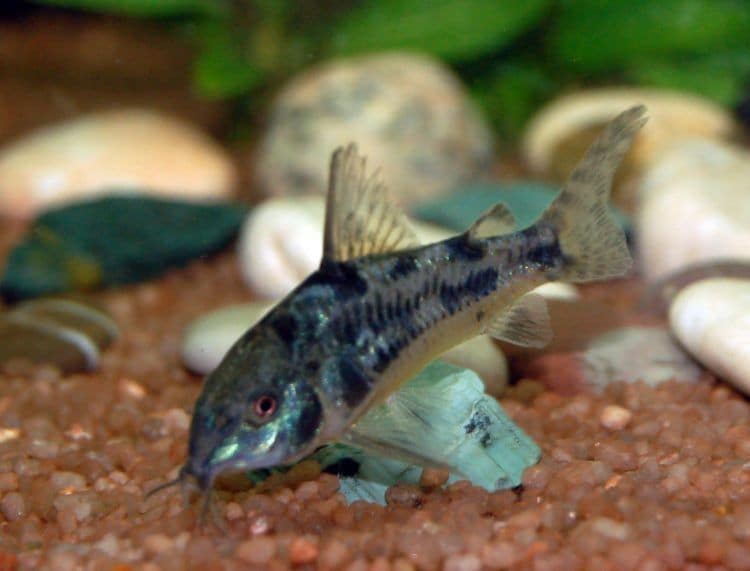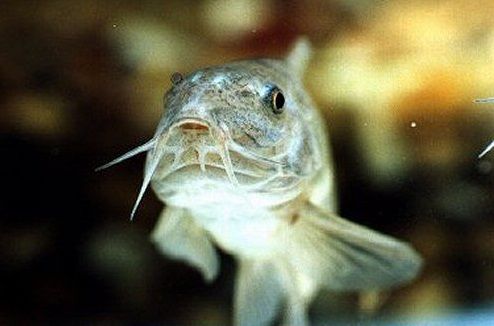
Corydoras paleatus (Peppered Cory) has been available to the aquarist for a long time. It was one of the first corydoras species to spawn in the aquarium. I have never attempted to spawn any of the catfish but have been successful with a number of other families.
I recently purchased eight C. paleatus at a Diamond State Aquarium Society auction. I took them home and placed them in a twenty gallon long tank. The tank water was at a pH of 7.0 and the temperature was 76º F. The water depth was approximately 4 inches. I placed a sponge filter in one corner and a clump of Java moss spread throughout the tank. The C. paleatus were the only inhabitants of this tank, since I always isolate new fish until I am sure they are healthy.
I fed the cats twice a day with Hikari sinking pellets and some flake food. Every other day I would add some brine shrimp to the diet. I changed about 25% of the water weekly, always adding the replacement water slowly in a trickle method I use.
I was not attempting to breed them, I believed them to be too young, just to raise them in a fit condition. About six weeks later I noticed some eggs stuck on the front glass of the tank. I watched the eggs for the next five days; nothing seemed to change. Two days later the eggs were gone, so I went about changing the water as I usually do. As I was siphoning out the bottom of the tank I noticed something small and dark dart away. I stopped the siphon and took a closer look in the bottom of the tank. When I moved the Java moss out of the way I was surprised to find five small cats. The puzzle was that they were not the same size but obviously of at least two different ages. I looked in the bucket that I use to collect my waste water and lo and behold here were nine more fry. These were even smaller than the ones I had spotted in the tank. Needless to say I returned all of them to the tank. I was not prepared to move the adults to any other tank so I figured if some of the first batches of fry had survived I gave these the same chance.
A month later, the five small cats I first observed are now well over one half inch in length and of the other nine, four that I have noted seem to be thriving. I think there may be more but I do not want to pull all of the moss out of the tank to find out. I guess since the adults are intent on breeding in spite of my lack of protocol I will separate out a healthy looking trio and attempt to follow some of the breeding procedures for these Corys that I have read about.
That’s my story of breeding Corydoras paleatus. There doesn’t seem to be much more I could have done except to be more alert when breeding occurred and to have removed the adults. I have read that they will eat their eggs and fry but I have not observed this. Since my first experience I have noted the typical T-position spawning behavior and the female’s depositing of eggs on the glass of the tank. I also have noted that at the temperature I maintained the eggs take about 4-5 days to hatch.

Leave a Reply